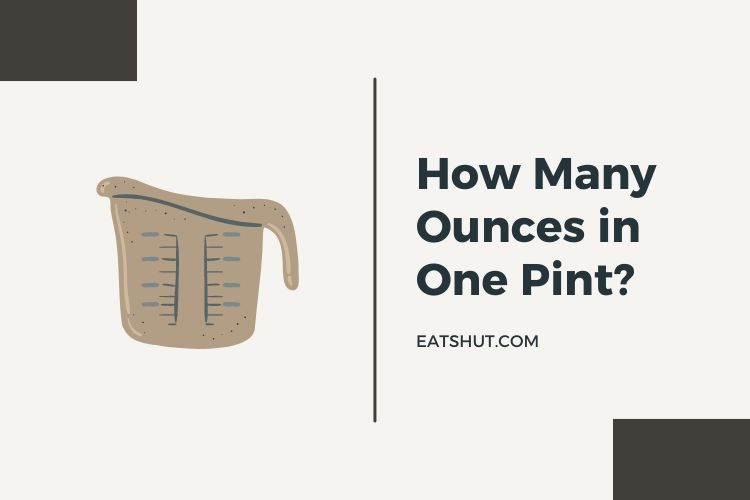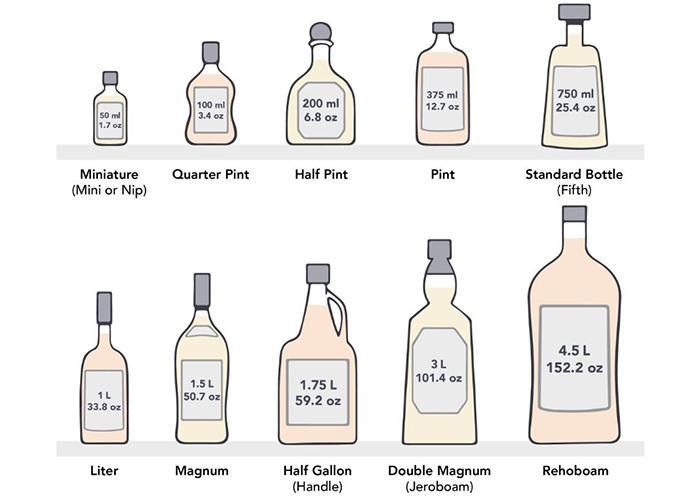How Much Is One Pint: Your Ultimate Guide To Understanding Pints In Everyday Life
Ever found yourself scratching your head at the bar wondering, "how much is one pint?" Well, you're not alone. Many people get confused when it comes to measurements, especially when they’re dealing with liquid quantities. Whether you're ordering a beer, measuring ingredients for a recipe, or simply trying to understand the metric system, knowing how much is one pint can save you from awkward moments. So, let's dive into this pint-sized mystery and break it down for you.
Let’s be real, life gets confusing when measurements don’t make sense. You’re standing there in the kitchen, staring at a recipe that calls for a pint of milk, and all you’ve got is a measuring cup. Panic sets in. But don’t worry, we’ve got your back. Understanding how much is one pint isn’t rocket science, and by the end of this article, you’ll be a pro at converting and measuring pints like a champ.
From bars to grocery stores, pints are everywhere. They’re a common unit of measurement, but they’re also one of the most misunderstood. Whether you’re a home brewer, a cooking enthusiast, or just someone who likes to know their stuff, mastering the concept of a pint will come in handy. So grab a drink (maybe even a pint), and let’s get started!
- Sofia Beverly The Rising Star Whos Capturing Hearts Worldwide
- Login Gm Financial A Comprehensive Guide For Smooth Sailing
What Exactly is a Pint?
Alright, let’s start with the basics. A pint is a unit of volume used primarily in the United States, the United Kingdom, and a few other countries. But here’s the kicker—there’s more than one type of pint! In the US, one pint equals 16 fluid ounces, while in the UK, it’s slightly larger at 20 fluid ounces. Confusing, right? But don’t sweat it; we’ll break it down further.
Think of a pint as a handy little container that holds just enough liquid to satisfy your thirst or your recipe needs. Whether it’s beer, milk, or even water, a pint is a versatile measurement that’s been around for centuries. So next time someone asks you how much is one pint, you’ll have the answer on the tip of your tongue.
Types of Pints Around the World
Not all pints are created equal. Depending on where you are, the size of a pint can vary. Here’s a quick rundown:
- Jasmine Monjack The Untold Story Of A Star Taken Too Soon
- Winnebago County Court Records Your Ultimate Guide To Accessing Public Legal Documents
- US Pint: 16 fluid ounces or approximately 473 milliliters.
- UK Pint: 20 fluid ounces or approximately 568 milliliters.
- Australian Pint: Similar to the UK pint, but slightly smaller at 570 milliliters.
- Canadian Pint: Also similar to the UK pint, but often served in smaller glasses.
So, if you’re traveling or ordering a pint abroad, be prepared for a surprise. What you think is a pint might actually be a little bigger—or smaller—than you expected!
How Much is One Pint in Everyday Terms?
Now that we’ve covered the technicalities, let’s talk about how much is one pint in real-life situations. Imagine this: you’re at a bar, and you order a pint of beer. In the US, you’ll get about 16 ounces, which is roughly two cups. In the UK, you’ll get a bit more—around 20 ounces. But what does that mean in practical terms?
Here’s a fun fact: a standard pint glass in the US holds exactly 16 ounces, making it easy to visualize. So if you’re ever unsure, just picture that glass in your hand. For cooking, a pint is roughly equivalent to two cups, which is perfect for measuring liquids like milk, broth, or wine.
Pints in Cooking and Baking
When it comes to cooking and baking, precision is key. Knowing how much is one pint can make or break your recipe. For example, if a recipe calls for a pint of heavy cream, you’ll need exactly 16 ounces or two cups. Here’s a quick conversion chart to help you out:
- 1 pint = 2 cups
- 1 pint = 16 fluid ounces
- 1 pint = approximately 473 milliliters
So whether you’re making soup, baking a cake, or whipping up a batch of pancakes, understanding pints will ensure your dishes turn out perfectly every time.
Why Understanding Pints Matters
You might be wondering, why does it matter how much is one pint? Well, aside from impressing your friends with your knowledge, understanding pints can save you time, money, and frustration. Imagine ordering a pint of beer and getting something completely different than what you expected. Or worse, messing up a recipe because you didn’t measure correctly. By knowing how much is one pint, you can avoid these pitfalls and enjoy life to the fullest.
Plus, understanding measurements is a valuable skill that can come in handy in all sorts of situations. From DIY projects to home brewing, knowing your pints from your quarts will make you the go-to person for all things measurement-related.
Pints vs. Other Measurements
Let’s not forget that pints aren’t the only measurement out there. Here’s a quick comparison to help you understand how pints stack up against other units:
- Quart: A quart is twice the size of a pint, so 1 quart equals 2 pints or 32 fluid ounces.
- Gallon: A gallon is much larger, with 1 gallon equaling 8 pints or 128 fluid ounces.
- Cup: A cup is half the size of a pint, so 1 pint equals 2 cups.
Knowing these conversions will help you navigate any measurement challenge that comes your way.
Fun Facts About Pints
Did you know that the word "pint" comes from the Latin word "pincta," which means "marked"? Back in the day, bartenders would mark their containers to indicate the amount of liquid inside. Over time, this evolved into the pint we know today. Here are a few more fun facts:
- Pints have been used for centuries as a standard measurement for beer and ale.
- In the UK, pubs are legally required to serve a full pint of beer, which must be at least 568 milliliters.
- Pints are also used to measure blood donations, with one pint being the standard amount collected during a donation.
Who knew such a simple unit of measurement could have such an interesting history?
How Pints Have Evolved Over Time
From ancient civilizations to modern-day bars, pints have come a long way. Originally, pints were used to measure everything from grains to liquids. Over time, they became standardized, especially with the rise of industrialization and global trade. Today, pints are a staple in bars, kitchens, and even laboratories.
But despite their long history, pints continue to evolve. With the rise of craft beer and specialty cocktails, the size and shape of pint glasses have changed to enhance the drinking experience. So the next time you raise a pint, take a moment to appreciate its rich history and cultural significance.
Common Misconceptions About Pints
There are a few common misconceptions about pints that we need to clear up. First, not all pint glasses hold exactly one pint. Many bars use glasses that are slightly larger or smaller, so don’t be surprised if your beer doesn’t quite fill the glass. Second, pints aren’t just for beer—they’re used for all sorts of liquids, from milk to wine.
Another misconception is that all pints are the same size. As we’ve already discussed, US and UK pints differ in size, so it’s important to know which one you’re dealing with. Finally, don’t assume that a pint is always served in a pint glass. In some places, you might get a pint in a mug or even a bottle.
How to Spot a True Pint
So how can you tell if you’re getting a true pint? Here are a few tips:
- Check the size of the glass. A standard pint glass should hold 16 ounces in the US and 20 ounces in the UK.
- Look for markings on the glass. Many pint glasses have etchings or stamps that indicate the volume.
- Ask the bartender. If you’re unsure, don’t be afraid to ask. Most bartenders will be happy to explain their serving sizes.
By following these tips, you’ll never have to worry about being shortchanged again.
Practical Applications of Pints
Now that you know how much is one pint, let’s talk about how you can use this knowledge in everyday life. Whether you’re cooking, drinking, or measuring, pints are a versatile tool that can simplify your life. Here are a few practical applications:
- Cooking: Use pints to measure liquids like milk, broth, and wine in your recipes.
- Drinking: Order a pint of your favorite beer or cocktail with confidence.
- Gardening: Measure water or fertilizer for your plants using pints.
- Blood Donation: Understand how much blood you’re donating when you give a pint.
By incorporating pints into your daily routine, you’ll become a master of measurements in no time.
Converting Pints to Other Units
Let’s face it, sometimes you need to convert pints to other units. Whether you’re working with metric or imperial measurements, here’s how you can do it:
- 1 pint = 473 milliliters (US)
- 1 pint = 568 milliliters (UK)
- 1 pint = 0.125 gallons
- 1 pint = 0.5 liters
With these conversions in your pocket, you’ll never have to guess again.
Conclusion: Embrace the Power of Pints
So there you have it—everything you need to know about how much is one pint. From its history and cultural significance to its practical applications, pints are a fascinating and versatile unit of measurement. Whether you’re cooking, drinking, or just trying to impress your friends, understanding pints will make your life easier and more enjoyable.
Now that you’re a pint expert, don’t forget to share your newfound knowledge with others. Leave a comment below and let us know how you plan to use your pint skills. And if you enjoyed this article, be sure to check out our other guides on measurements and cooking tips. Here’s to mastering the art of pints!
Table of Contents
- What Exactly is a Pint?
- Types of Pints Around the World
- How Much is One Pint in Everyday Terms?
- Pints in Cooking and Baking
- Why Understanding Pints Matters
- Pints vs. Other Measurements
- Fun Facts About Pints
- Common Misconceptions About Pints
- Practical Applications of Pints
- Converting Pints to Other Units



Detail Author:
- Name : Sedrick Corkery
- Username : estella.ryan
- Email : margie.friesen@gmail.com
- Birthdate : 1993-02-23
- Address : 23394 Ernest Estates Rohanhaven, MA 60709-4237
- Phone : (229) 897-7511
- Company : Kozey Group
- Job : Gaming Surveillance Officer
- Bio : Vero et quo ullam beatae. Voluptatem a aperiam voluptatem qui cupiditate. Qui ipsa magnam itaque sint corporis. Qui reiciendis quis alias assumenda autem ut autem adipisci. Sequi libero aut sit ut.
Socials
tiktok:
- url : https://tiktok.com/@schummf
- username : schummf
- bio : Magnam molestiae quod reiciendis. Dicta praesentium provident et ut.
- followers : 3986
- following : 2195
twitter:
- url : https://twitter.com/schumm1988
- username : schumm1988
- bio : Est repellendus nihil amet voluptatibus quam. Ducimus ab blanditiis explicabo debitis nihil debitis est. Molestias harum provident atque.
- followers : 6579
- following : 729
facebook:
- url : https://facebook.com/frankieschumm
- username : frankieschumm
- bio : Cumque dolore beatae doloribus ratione et eum.
- followers : 2256
- following : 2090
instagram:
- url : https://instagram.com/frankieschumm
- username : frankieschumm
- bio : Qui aliquam blanditiis dolores. Quidem ullam non qui.
- followers : 2906
- following : 712
linkedin:
- url : https://linkedin.com/in/frankie_xx
- username : frankie_xx
- bio : Et harum aut enim reprehenderit ipsum impedit.
- followers : 2863
- following : 2760